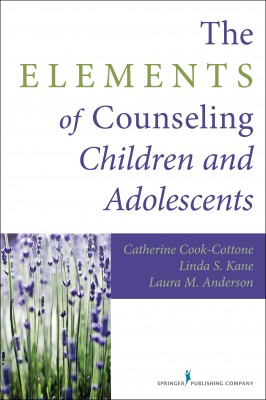 The Elements of Counseling Children and Adolescents is a brief, yet beneficial, text that offers an introduction to anyone exploring developmentally appropriate strategies for addressing the problems of children and adolescents. As is, the text may be useful for students in all branches of mental health.
The Elements of Counseling Children and Adolescents is a brief, yet beneficial, text that offers an introduction to anyone exploring developmentally appropriate strategies for addressing the problems of children and adolescents. As is, the text may be useful for students in all branches of mental health.
The authors begin the book by reviewing the concepts of setting the stage for counseling (Chapter 1), the process of counseling (Chapter 2), and self-awareness and growth (Chapter 3). Though these topics are covered in many introductory counseling books, here the authors focus on what counseling can look like when working with children and adolescents. Likewise, the authors discuss setting the stage, the process of counseling, and self-awareness and growth from a developmental perspective for working with non-adult clients. One might also conceptualize Chapters 2 and 3 as concerning the fundamental skills used in counseling tailored for children and adolescents. Within these chapters, as the authors explore each skill, they provide mini-transcript examples to demonstrate each skill.
In Chapter 4, misconceptions and assumptions are examined. The authors remind readers that children and adolescents are not adults, and that progress and growth may not occur in the same fashion or resemble that of adults. This chapter, as a prelude to Chapter 5, warns of cookie-cutter approaches and emphasizes the importance of the client’s individuality.
Chapter 5 provides a brief description of evidence-based and contemporary practices that are useful when working with non-adult populations. The chapter covers the more conventional modalities (e.g., brief, solution-focused, cognitive behavioral and behavioral) as well as the less conventional (e.g., play therapy and creative techniques). Both individual and systemic counseling models are described. Chapters 6 and 7 end the book’s coverage of topics by discussing crisis intervention, mandated reporting, grief and counselor self-care.
The book is easy to read and the chapters flow in a succinct manner. Its greatest strength is the use of the “elements of” format to highlight specific topics that are important for all to consider, regardless of whether the reader is a novice or educator. In total, 59 elements are described. Also, as previously noted, each chapter includes mini-session transcripts as well as summary and discussion questions. These aspects allow for further discussion within educational settings or reflection by individual readers. Finally, the appendix provides a “how to” section for use in educational settings.
In addition to its strengths, The Elements of Counseling Children and Adolescents also has some limitations. The text is only introductory and does not provide enough depth to be used as the primary text for a class on counseling children and adolescents. At only 126 pages, the book lacks information on the application of evidence-based practices to specific disorders. The authors mention the tenets of each modality as well as some of the disorders that each modality may be used to treat; however, there is no exploration or description of, for example, what “Modality A” looks like when used with “Disorder A.” The text frequently and appropriately describes the importance of individual differences and integrative practice; however, it fails to explore cultural differences within child and adolescent populations.
The best application of the text for counseling professionals would be as a supplemental text in a class on counseling skills and techniques. The average skills class covers the basic counseling microskills from the perspective of working with adults. With this said, this text would make an excellent companion to apply basic skills to working with non-adult populations.
Cook-Cottone, C. P., Kane, L. S., & Anderson, L. M. (2015). The elements of counseling children and adolescents. New York, NY: Springer.
Reviewed by: E. Franc Hudspeth, NCC, Henderson State University, Arkadelphia, AR.
The Professional Counselor
